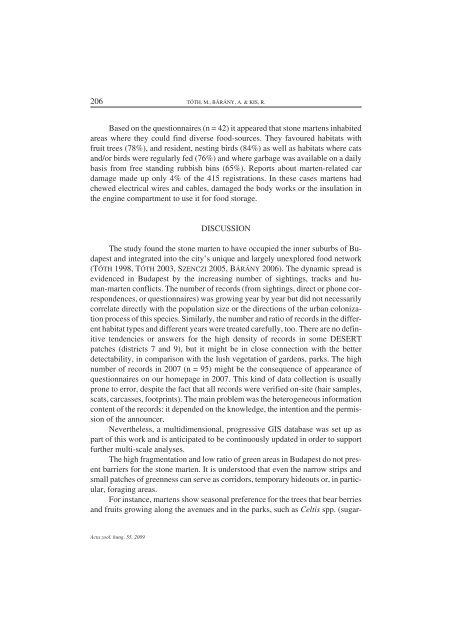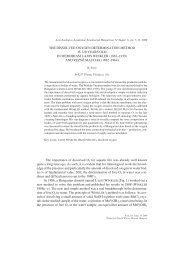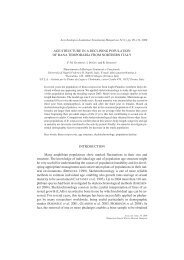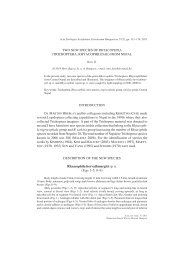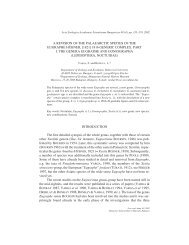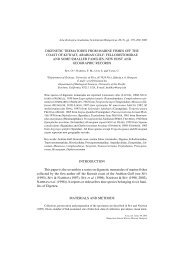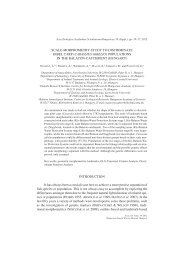AN EVALUATION OF STONE MARTEN (MARTES ... - ResearchGate
AN EVALUATION OF STONE MARTEN (MARTES ... - ResearchGate
AN EVALUATION OF STONE MARTEN (MARTES ... - ResearchGate
You also want an ePaper? Increase the reach of your titles
YUMPU automatically turns print PDFs into web optimized ePapers that Google loves.
206 TÓTH, M., BÁRÁNY, A. & KIS, R.<br />
Based on the questionnaires (n = 42) it appeared that stone martens inhabited<br />
areas where they could find diverse food-sources. They favoured habitats with<br />
fruit trees (78%), and resident, nesting birds (84%) as well as habitats where cats<br />
and/or birds were regularly fed (76%) and where garbage was available on a daily<br />
basis from free standing rubbish bins (65%). Reports about marten-related car<br />
damage made up only 4% of the 415 registrations. In these cases martens had<br />
chewed electrical wires and cables, damaged the body works or the insulation in<br />
the engine compartment to use it for food storage.<br />
DISCUSSION<br />
The study found the stone marten to have occupied the inner suburbs of Budapest<br />
and integrated into the city’s unique and largely unexplored food network<br />
(TÓTH 1998, TÓTH 2003, SZENCZI 2005, BÁRÁNY 2006). The dynamic spread is<br />
evidenced in Budapest by the increasing number of sightings, tracks and human-marten<br />
conflicts. The number of records (from sightings, direct or phone correspondences,<br />
or questionnaires) was growing year by year but did not necessarily<br />
correlate directly with the population size or the directions of the urban colonization<br />
process of this species. Similarly, the number and ratio of records in the different<br />
habitat types and different years were treated carefully, too. There are no definitive<br />
tendencies or answers for the high density of records in some DESERT<br />
patches (districts 7 and 9), but it might be in close connection with the better<br />
detectability, in comparison with the lush vegetation of gardens, parks. The high<br />
number of records in 2007 (n = 95) might be the consequence of appearance of<br />
questionnaires on our homepage in 2007. This kind of data collection is usually<br />
prone to error, despite the fact that all records were verified on-site (hair samples,<br />
scats, carcasses, footprints). The main problem was the heterogeneous information<br />
content of the records: it depended on the knowledge, the intention and the permission<br />
of the announcer.<br />
Nevertheless, a multidimensional, progressive GIS database was set up as<br />
part of this work and is anticipated to be continuously updated in order to support<br />
further multi-scale analyses.<br />
The high fragmentation and low ratio of green areas in Budapest do not present<br />
barriers for the stone marten. It is understood that even the narrow strips and<br />
small patches of greenness can serve as corridors, temporary hideouts or, in particular,<br />
foraging areas.<br />
For instance, martens show seasonal preference for the trees that bear berries<br />
and fruits growing along the avenues and in the parks, such as Celtis spp. (sugar-<br />
Acta zool. hung. 55, 2009


